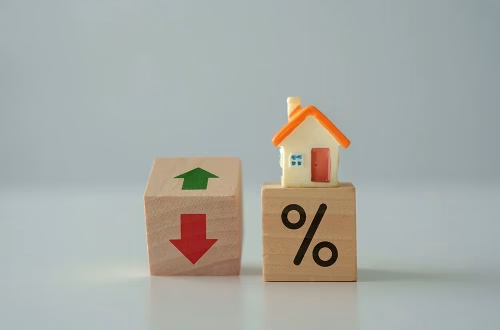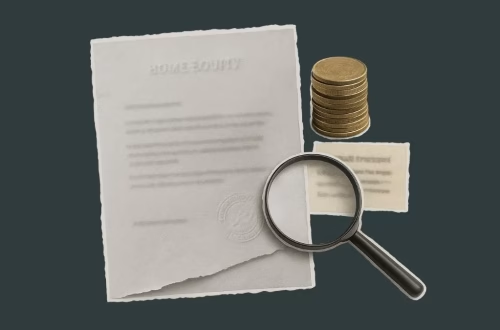What Are the Down Payment Rules for Investment Property Mortgages?
Summary:
Understanding down payment rules for investment property mortgages is critical for aspiring investors and business owners seeking to build wealth through real estate. Unlike primary residences, investment properties typically require larger down payments (15-25%+) to mitigate lender risk, impacting cash flow, financing terms, and long-term ROI. Current market conditions with rising interest rates make strategic down payment planning essential to secure favorable loan terms and avoid costly mortgage insurance. This guide demystifies lender requirements, loan program variations, and actionable strategies to optimize your investment while navigating common pitfalls like inflated repair costs or tightening lender standards.
What This Means for You:
- Higher Capital Requirements: Expect to allocate 15-30% (or more) of the purchase price upfront; plan liquidity reserves accordingly
- Lender Variations: Compare conventional, portfolio lenders, and agency loans – minimums range from 15% (DU/LP) to 25%+ (hard money)
- Cash Flow Impact: Larger down payments lower monthly payments but reduce capital for other investments
- Market Sensitivity: Rates and requirements tighten during economic uncertainty – act decisively
Explained: What Are the Down Payment Rules for Investment Property Mortgages?
Investment property down payment rules dictate the minimum cash contribution a borrower must make when financing non-owner-occupied real estate, as defined by Fannie Mae, Freddie Mac, and institutional lenders. These rules exist to protect lenders from default risk, as investment properties statistically have higher delinquency rates than primary residences. Requirements vary by loan type (e.g., conventional loans start at 15% for 1-unit properties) and are influenced by the borrower’s credit profile, property type (1-4 units vs. multifamily), and debt-service coverage ratios (DSCR).
In today’s market, tighter lending standards post-2022 make down payments a key leverage tool. Investors with 25-30%+ down often secure better rates and avoid private mortgage insurance (PMI), which isn’t automatically cancellable on investment loans. The Federal Reserve’s SLR (Supplementary Leverage Ratio) guidelines also indirectly shape requirements by limiting bank exposure to high-risk assets—including low-equity investment mortgages.
“What Are the Down Payment Rules for Investment Property Mortgages?” Types:
Conventional Loans: Backed by Fannie Mae/Freddie Mac, these require 15-25% down for 1-4 unit properties. Advantage: Competitive rates for borrowers with 720+ credit scores. Disadvantage: Strict DTI limits (≤45%).
Portfolio Loans: Offered by community banks/credit unions, often requiring 20-30% down. Advantage: Flexible underwriting for unique properties. Disadvantage: Higher rates and prepayment penalties.
FHA Loans: Only permitted for multi-unit investment properties (max 4 units) if the borrower occupies one unit. Minimum 3.5% down but requires mortgage insurance. High cost vs. conventional loans.
Hard Money Loans: Short-term loans with 25-35% down. Advantage: Fast approval for flips. Disadvantage: Rates of 10-15% and 1-3 year terms.
DSCR Loans: Underwritten based on rental income coverage (typically 1.25x). Down payments start at 20% but may reach 40% for new investors.
Requirements of “What Are the Down Payment Rules for Investment Property Mortgages?”:
Lenders evaluate four pillars: (1) Minimum credit score of 680 (preferably 740+), (2) documented reserves (6+ months of PITI), (3) property rent rolls/appraisal (showing 25-30%+ equity cushion), and (4) Debt-to-Income (DTI) below 45% post-mortgage. Non-QM loans may accept bank statements instead of tax returns.
“What Are the Down Payment Rules for Investment Property Mortgages?” Process:
Step 1: Pre-Approval – Submit financials to confirm your max loan amount and down payment capacity. Hard credit pull required.
Step 2: Loan Application – Provide property details, purchase contract, and proof of funds for the down payment (e.g., bank statements).
Step 3: Underwriting – Lender verifies income, assets, and property viability. Investment properties face stricter scrutiny than primary homes.
Step 4: Appraisal – Ordered to confirm property value; low appraisals may force increased down payments.
Step 5: Closing – Down payment is wired + closing costs (3-5% of loan). Title transfer and loan docs signed.
Choosing the Right Finance Option:
Prioritize loans that align with your exit strategy: choose DSCR loans for long-term rentals or hard money for flips. Compare Loan-to-Cost (LTC) ratios—not just Loan-to-Value—if financing repairs. Red flags include prepayment penalties exceeding 3% or lenders who don’t verify property income (signaling predatory terms).
People Also Ask:
Can you put less than 20% down on an investment property?
Yes, but only via conventional loans (15% minimum with 720+ credit) or house-hacking FHA loans (3.5% with owner occupancy). Expect higher rates or required PMI.
Do all investment properties require a 20% down payment?
No. New Fannie Mae guidelines allow 15% down for 1-unit investments with 720+ credit. Multifamily properties often need 25%.
Can I use an FHA loan for a pure investment property?
No—you must occupy at least one unit for multi-family buildings (max 4 units). Strict occupancy rules apply.
Are down payments higher for commercial investment properties?
Yes. Office/retail properties typically require 25-35% down via commercial mortgages. SBA 504 loans may allow 10% for owner-occupied.
Can I use equity from another property for the down payment?
Yes. A cash-out refinance or HELOC on an existing property can fund the down payment (subject to lender DTI limits).
Extra Information:
Fannie Mae Selling Guide – Official guidelines for conventional investment loans.
HUD.gov – FHA multi-unit occupancy requirements.
Federal Reserve SLR Rules – Explains how banking regulations impact investor lending.
Expert Opinion:
Down payment requirements are the linchpin of successful investment property financing—undercapitalization leads to renovation delays or foreclosures during market downturns. Savvy investors structure purchases with 25-30% down to reserve capital for unexpected vacancies or repairs, ensuring long-term cash flow stability despite fluctuating rates.
Key Terms:
- minimum down payment for rental property
- investment property mortgage requirements
- how to finance investment property with low money down
- Fannie Mae investment property guidelines
- DSCR loan down payment percentages
*featured image sourced by Pixabay.com
Automatic Mortgage Calculator
Welcome to our Automatic Mortgage Calculator 4idiotz! Please just add your figures in the correct sections below and the Automatic Mortgage Calculator will automatically calculate the results for you and display them at the bottom of the page.





